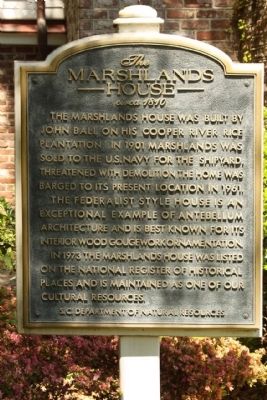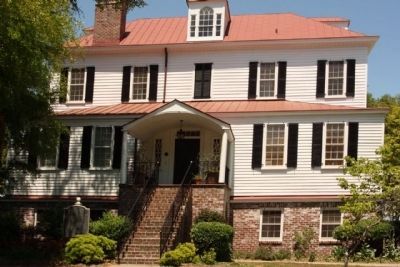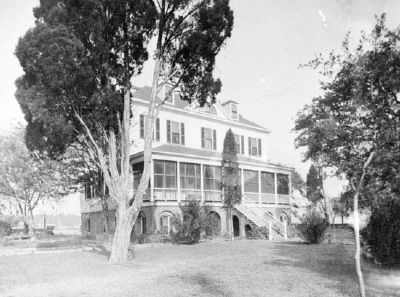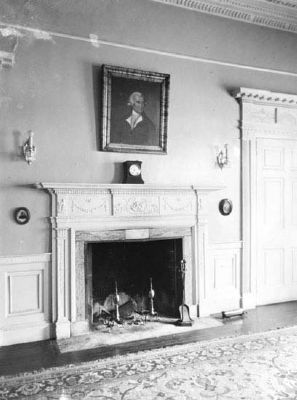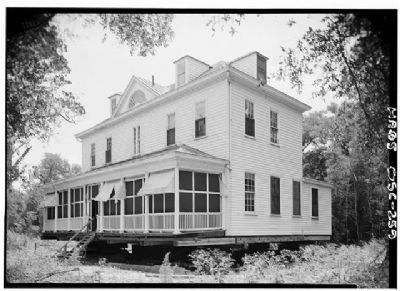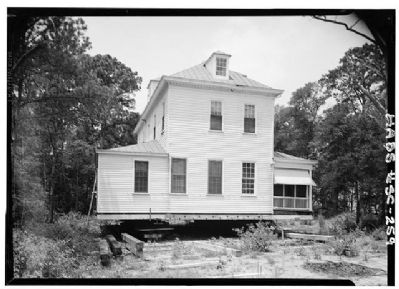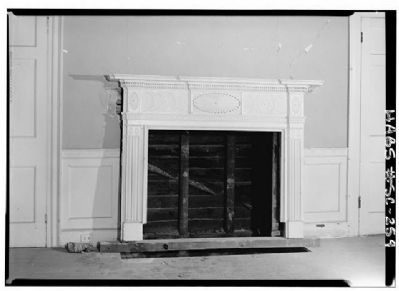James Island in Charleston County, South Carolina — The American South (South Atlantic)
Marshlands House
Circa 1810
The Federalist style house is an exceptional example of Antebellum Architecture and is best known for its interior wood gougework ornamentation.
In 1973 the Marshlands House was listed on the National Register of Historical Places and is maintained as one of our cultural resources.
Erected by S.C. Department of Natural Resources.
Topics. This historical marker is listed in this topic list: Notable Buildings. A significant historical year for this entry is 1901.
Location. 32° 45.034′ N, 79° 54.031′ W. Marker is on James Island, South Carolina, in Charleston County. Marker is on Fort Johnson Road, on the left when traveling north. Located at S.C. Department of Natural Resources Campus Approx. 500 yards from northern tip,Fort Johnson Road, James Island. Touch for map. Marker is at or near this postal address: 329 Fort Johnson Rd, Charleston SC 29412, United States of America. Touch for directions.
Other nearby markers. At least 8 other markers are within 2 miles of this marker, measured as the crow flies. Grice Marine Laboratory (approx. 0.2 miles away); Site of Fort Johnson (approx. 0.2 miles away); The First Shot of the War of Secession (approx. 0.2 miles away); Battery Cheves (approx. one mile away); Sally Port (approx. 1½ miles away); Powder Magazine (approx. 1½ miles away); Casemates and Cannon (approx. 1½ miles away); 42-Pounder, Banded and Rifled (approx. 1½ miles away). Touch for a list and map of all markers in James Island.
Regarding Marshlands House. Architecturally, the Marshlands house is a valuable example of a plantation home built during the Federal period. The interior floor plan, the large front piazza, and the high brick foundations reflect the location and period of construction as well as the lifestyle of the owner. The handcarved woodwork is outstanding and especially noteworthy because of the presence of two distinct styles: Adam ornamentation and gouge work. Marshlands was built during the crest of expanding rice production after the Revolution. The two-and-a-half story clapboard house has remained basically unaltered since it was built in 1810. Brick foundations and chimneys, however, were taken apart and reconstructed following a 1961 move of approximately seven miles from its original Cooper River location to Fort
Johnson. The basement level of the main façade features an arcade of eight high brick arches. Also resting on arched foundations is a steep, brick stairway. The first floor piazza extends the width of the house. Presently screened and enclosed by a balustrade, the piazza has the original hipped roof with dentils on the soffit of the eaves. Supporting the wide porch are eight slender freestanding columns and two identical engaged columns. Listed in the National Register March 30, 1973.
(South Carolina Department of Archives and History)
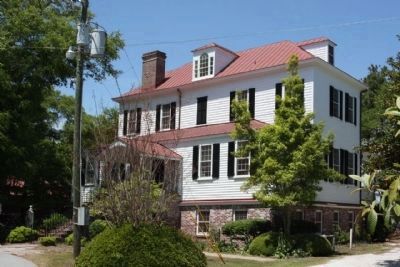
Photographed By Mike Stroud, April 20, 2010
3. Marshlands House as seen today
This is an old 18th century plantation house that was moved by barge from way up the river down to Fort Johnson when the land was sold out from under it. Today it's the headquarters for the S.C. Department of Natural Resources, the defacto landlord of the Fort Johnson campus.
Credits. This page was last revised on February 16, 2023. It was originally submitted on May 12, 2010, by Mike Stroud of Bluffton, South Carolina. This page has been viewed 1,433 times since then and 70 times this year. Photos: 1, 2, 3, 4, 5, 6, 7, 8. submitted on May 12, 2010, by Mike Stroud of Bluffton, South Carolina.
